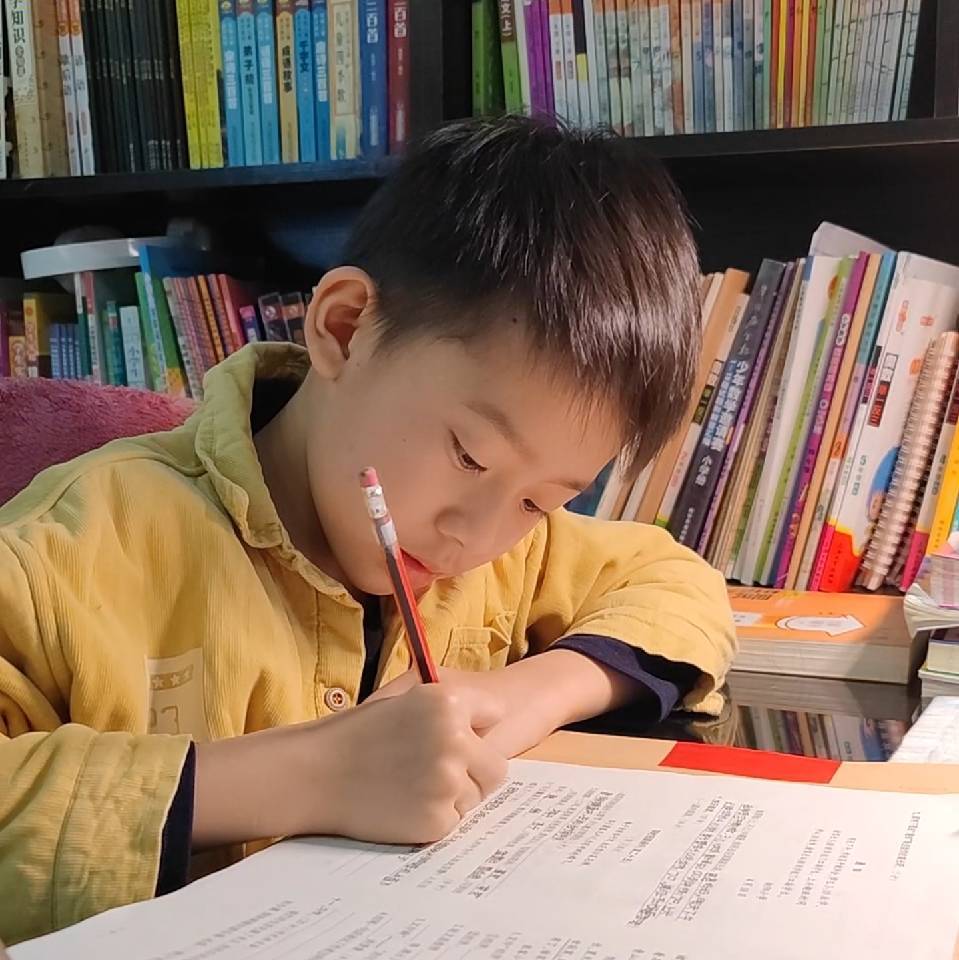语态:主动语态、被动语态
英语语态(Voice)是动词的一种语法形式,核心功能是表示主语与谓语动词之间的逻辑关系——即主语是“动作的发出者”还是“动作的承受者”。英语中只有两种基本语态:主动语态(Active Voice) 和被动语态(Passive Voice),二者可根据表达重点(突出主语还是动作对象)灵活转换。
一、主动语态(Active Voice):主语是动作的发出者
主动语态是最常用的语态,句子结构清晰,逻辑为“主语(发出动作)+ 谓语动词(动作本身)+ 宾语(承受动作)”,核心是突出“谁做了什么”,主语是动作的执行者,宾语是动作的对象。
主动语态的核心特征:
1. 主语直接发出谓语动词表示的动作,无需借助“be动词+过去分词”结构;
2. 句子结构以“主谓”“主谓宾”“主谓双宾”“主谓宾补”为主,语义直接,语气自然;
3. 适用于需要明确动作执行者、强调主语的场景(如叙述事实、介绍流程、描述行为等)。
1. My mother cooks delicious dinner for our family every evening.(我妈妈每天晚上给家人做美味的晚餐。主语“my mother”是“cooks”(做)的发出者,宾语“dinner”是承受者,突出“妈妈做饭”的动作)
2. The little girl sings a sweet song in the park every weekend.(这个小女孩每个周末都在公园里唱一首甜美的歌。主语“the little girl”是“sings”(唱)的发出者,强调“女孩唱歌”的行为)
3. He finished his homework before watching TV last night.(昨晚他在看电视前完成了作业。主语“he”是“finished”(完成)的发出者,明确“他完成作业”的动作顺序)
4. We plant many young trees in the school yard every spring.(我们每年春天都在校园里种很多小树苗。主语“we”是“plant”(种)的发出者,突出“我们种树”的集体行为)
5. The teacher explains difficult grammar points to us patiently.(老师耐心地给我们讲解难懂的语法点。主语“the teacher”是“explains”(讲解)的发出者,双宾语结构,强调“老师的讲解”)
6. She writes a letter to her pen pal in England once a month.(她每个月给英国的笔友写一封信。主语“she”是“writes”(写)的发出者,明确“她写信”的频率和对象)
7. The dog chased a small cat across the street just now.(刚才那只狗追着一只小猫跑过了马路。主语“the dog”是“chased”(追)的发出者,描述“狗追猫”的即时动作)
8. My brother fixes his broken bike by himself every time.(我弟弟每次都自己修理他那辆坏了的自行车。主语“my brother”是“fixes”(修理)的发出者,强调“弟弟自己动手”的能力)
9. They organize a charity sale to help poor children every year.(他们每年都组织一次慈善义卖来帮助贫困儿童。主语“they”是“organize”(组织)的发出者,突出“他们的慈善行为”)
10. I read an interesting novel in the library yesterday afternoon.(昨天下午我在图书馆读了一本有趣的小说。主语“I”是“read”(读)的发出者,明确“我读书”的时间和地点)
二、被动语态(Passive Voice):主语是动作的承受者
被动语态的逻辑与主动语态相反,句子结构为“主语(承受动作)+ be动词 + 动词过去分词(动作本身)+ (by + 动作发出者)”,核心是突出“什么被做了”或“谁被怎样了”——当动作发出者未知、不重要,或需要强调动作对象时,优先使用被动语态。
被动语态的核心特征:
1. 必须包含“be动词(am/is/are/was/were/been/being)+ 动词过去分词”结构,二者缺一不可;
2. 动作发出者可通过“by + 名词/代词”补充(置于句末),若发出者未知或无需强调,可省略“by短语”;
3. 时态由“be动词”的形式体现(如一般现在时用am/is/are,一般过去时用was/were),动词过去分词保持不变;
4. 适用于以下场景:① 动作发出者不明(如“窗户被打破了”);② 强调动作对象(如“这本书被很多人阅读”);③ 正式文体(如新闻、科技文献、公告等,避免主观视角)。
1. 一般现在时被动(am/is/are + 过去分词)
English is spoken by people in many countries around the world.(英语被世界上很多国家的人使用。主语“English”是“speak”的承受者,强调“英语被使用”,动作发出者“people”用by补充)
The classroom is cleaned by students every afternoon after class.(教室每天下午放学后由学生们打扫。主语“the classroom”是“clean”的承受者,明确“教室被打扫”的时间和执行者)
2. 一般过去时被动(was/were + 过去分词)
A new library was built in our school last year.(我们学校去年建了一座新图书馆。主语“a new library”是“build”的承受者,动作发出者(如“工人”)不重要,省略by短语)
The valuable painting was stolen from the museum last night.(那幅珍贵的画昨晚从博物馆被盗了。主语“the painting”是“steal”的承受者,动作发出者未知,省略by短语,强调“画被盗”的结果)
3. 一般将来时被动(will be + 过去分词 / be going to be + 过去分词)
The meeting will be held in the conference room at 9 a.m. tomorrow.(会议将于明天上午9点在会议室举行。主语“the meeting”是“hold”的承受者,强调“会议被举行”的时间和地点,执行者省略)
This problem is going to be solved by our team next week.(这个问题将在下周由我们团队解决。主语“this problem”是“solve”的承受者,明确“问题被解决”的时间和执行者)
4. 现在进行时被动(am/is/are being + 过去分词)
The old building is being repaired by workers now.(那栋旧楼现在正在被工人们修缮。主语“the old building”是“repair”的承受者,强调“正在被修缮”的进行状态)
The letters are being typed by the secretary in the office right now.(秘书此刻正在办公室里打这些信件。主语“the letters”是“type”的承受者,突出“信件正在被打”的即时动作)
5. 现在完成时被动(have/has been + 过去分词)
All the homework has been finished by the students before the deadline.(所有作业都被学生们在截止日期前完成了。主语“homework”是“finish”的承受者,强调“已经被完成”的结果)
This book has been translated into more than 20 languages since it was published.(这本书自出版以来已被翻译成20多种语言。主语“this book”是“translate”的承受者,突出“被翻译”的成果和时间跨度)
三、主动语态与被动语态的转换规则(补充)
主动语态和被动语态可相互转换,核心是“动作发出者与承受者的角色互换”,转换时需注意以下3点:
1. 主动句的“宾语”变为被动句的“主语”(若主动句无宾语,不可转换为被动语态,如不及物动词“sleep”“run”等);
2. 主动句的“谓语动词”变为“be动词 + 过去分词”,时态由be动词体现,过去分词不变;
3. 主动句的“主语”变为被动句的“by + 动作发出者”(可省略,若需强调则保留)。
转换示例:
主动句:The workers built a new bridge last year.(工人们去年建了一座新桥。)
被动句:A new bridge was built by the workers last year.(一座新桥去年由工人们建成。)
通过转换,句子的强调重点从“工人们(主语)”转移到“新桥(主语)”,符合被动语态“突出动作对象”的功能。
英语基础
- 陈一男基础英语研究
- 2023年广东中考英语试题
- 2024年广东中考英语试题
- 2025年广东中考英语试题(待续)
- 学习英语最有效的方法与学习路径
- 词法:名代形副动,数介连叹助
- 词法:名词
- 词法:代词
- 词法:冠词:a、an、the、零冠词
- 词法:形容词
- 词法:副词
- 词法:数词:基数、序数
- 词法:量词
- 词法:感叹词:What! Yes!
- 词法:连词: F、A、N、B、O、Y、S
- 词法:介词:位、时、方、手段、原因、目的
- 词法:易混淆介词:时间、地点、方式、关系
- 词法:动词
- 句法:非谓语动词:不定式、动名词、分词
- 短语:名短、动短、形短、副短、介短
- 构词法:英语中创造新单词的规则和方法
- 前缀 + 词根:仅改词义,不改词性
- 词根 + 后缀:改变词性,可微调词义
- 合成法:A+B
- 转化法:单词不改变形式,直接变词性
- 缩略法:缩短原词构成新词
- 构词法:名词后缀
- 单词记忆:语言学习的基础
- [1]一般现在时 do/does
- [2]一般过去时 did
- [3]一般将来时 will + 动原
- [4]一般过去将来时 would + 动原
- [1]现在进行时 be(am/is/are) + 现分
- [2]过去进行时 was/were + 现分
- [3]将来进行时 will be + 现分
- [4]过去将来进行时 would be + 现分
- [1]现在完成时 have/has + 过分
- [2]过去完成时 had + 过分
- [3]将来完成时 will have + 过分
- [4]过去将来完成时 would have + 过分
- [1]现在完成进行时 have/has been+现分
- [2]过去完成进行时 had been+现分
- [3]将来完成进行时 will have been+现分
- [4]过去将来完成进行时 would have been+现分
- 语态:主动语态、被动语态
- 句子结构:核心是“主谓关系”
- 句法:存在句 There be 句型
- 句法:拥有句 have/has 句型
- [1]主语:句子所叙述的主体
- [2]谓语:陈述主语的动作、状态或特征
- [3]宾语:动作的目标 或 关联的对象
- [4]定语:回答关于中心词的疑问
- [5]状语:回答关于句子成分的疑问
- [6]补语:对主语或宾语进行补充定性
- [7]表语:必须搭配系动词
- [8]同位语:给本位语贴标签、做注释
- 主谓一致:主语和谓语在人称和数保持一致
- 句子的分类:按结构分类、按功能分类
- 直接引语 和 间接引语
- [1]句法:名词性从句:主语从句
- [2]句法:名词性从句:宾语从句
- [3]句法:名词性从句:表语从句
- [4]句法:名词性从句:同位语从句
- 句法:定语从句:7W + 1T
- [1]时间状语从句:when、while、as
- [2]地点状语从句:where、wherever
- [3]原因状语从句:because、since、as
- [4]条件状语从句:if、unless、as long as
- [5]目的状语从句:so that、in order that
- [6]结果状语从句:so...that、such...that
- [7]让步状语从句:although/though、while
- [8]方式状语从句:as、as if/as though
- [9]比较状语从句:as...as
- 强调句、倒装句、省略句、虚拟语气句
- 虚拟语气:表达非真实情况的语法结构
- 积累:意思相近的单词
- 积累:be
- 积累:do
- 积累:to
- 积累:no
- 积累:not
- 积累:none
- 积累:nothing
- 积累:good
- 积累:well
- 积累:also
- 积累:get
- 积累:have
- 积累:if
- 积累:whether
- 积累:but
- 积累:or
- 积累:of
- 积累:talk
- 积累:take
- 积累:with
- 积累:by
- 积累:for
- 积累:the
- 积累:than
- 积累:then
- 积累:that
- 积累:this
- 积累:as
- 积累:so
- 积累:such
- 积累:which
- 积累:while
- 积累:where
- 积累:when
- 积累:what
- 积累:how
- 积累:who
- 积累:whom
- 积累:whose
- 积累:many
- 积累:much
- 积累:too
- 积累:very
- 积累:some
- 积累:any
- 积累:few
- 积累:little
- 积累:each
- 积累:every
- 积累:other
- 积累:others
- 积累:another
- 积累:time
- 积累:day
- 积累:before 与 ago
- 积累:in
- 积累:on
- 积累:at
- 听力[A1-01]:Family(家庭)
- 听力[A1-02]:Food(食物)
- 听力[A1-03]:Weather(天气)
- 听力[A1-04]:Supermarket(超市)
- 听力[A1-05]:Transportation(交通工具)
- 听力[A1-06]:Restaurants(餐厅)
- 听力[A1-07]:Weekend plans(周末计划)
- 听力[A1-08]:Pets(宠物)
- 听力[A1-09]:Animals(动物)
- 听力[A1-10]:School life(校园生活)
- 听力[A1-11]:Favorite place(最喜欢的地方)
- 听力[A1-12]:Directions(指路)
- 听力[A1-13]:Music(音乐)
- 听力[A1-14]:Daily Technology Products(日常科技产品)
- 听力[A1-15]:Social Activities(社交活动)
- 听力[A1-16]:Daily Problems(日常问题)
- 听力[A1-17]:Celebrations(庆祝活动)
- 听力[A1-18]:Seasonal Fruits(应季水果)
- 听力[A1-19]:Meeting new people(结识新朋友)
- 听力[A1-20]:Friends(朋友)
- 听力[A1-21]:Stay Guide(住宿指南)
- 听力[A1-22]:Parks(公园)
